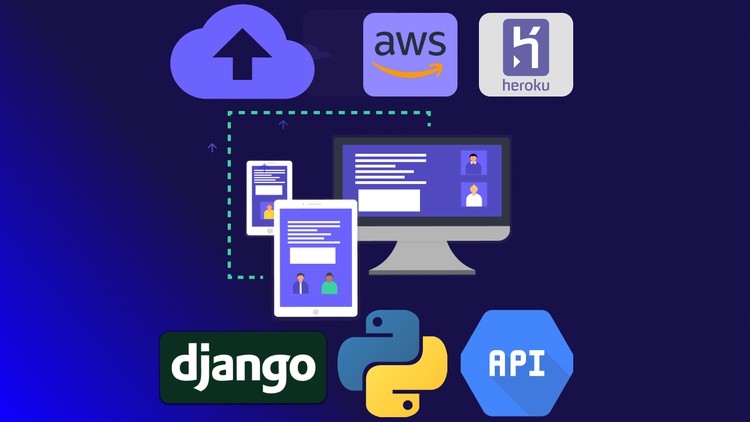Django REST API With Python & DRF (All you Need to Know)
Build a Robust API Using Python & Django Rest Framework (from beginner to advanced)
What you’ll learn
Django REST API With Python & DRF (All you Need to Know)
-
Build a robust API using Django Rest Framework
-
Handle users authentication (Signup, Login, Logout … etc) using Django-rest-auth
-
API Functional Based Views (How and When to use them) -APIView- @decorators
-
API security using Authentication Tokens and Permissions
-
Sending Parameters To The Server (API) Within The URL And Extract Them Inside Our Function-Based View.
-
Create a Model Class & add it to the admin panel and store some Data in the Database.
-
What is Serializer, how to write a Model Serializer for a Django Model Class, and serialize data?
-
How to use ModelViewSet and Routers With Serializer.
-
Search and Filtering Data Inside ModelViewset.
-
How to filter data from the database using two or three parameters inside ModelViewSet.
-
Override Create, Update / Put, Delete, Partial Update / Patch Actions
-
How to use Django Relationships to link models (Many To One, One To One, Many To Many)
-
How to get and show the nested data from the API response
-
Learn how to use APIView to handle get and post requests inside the views file
-
How to get a specific object from the database using APIView get method.
-
Django rest framework API authentication with JWT (JSON Web Token) VS AuthToken
-
How to build a custom user model in Django rest framework API.
-
Learn how To Add Extra Fields To a Serializer Using SerializerMethodField
-
How To Use THREADING To Improve API Performance.
-
How To Schedule a Task or Function To Improve API Performance.
-
Django API Permissions Using Throttling. How to use the throttle to control the rate of requests to Django API
-
Deploy Django Rest API with Heroku
-
Deploy Django Rest API to AWS
Requirements
-
Basic knowledge of Python 3
Description
Introducing the Django REST Framework course where you learn:
- Build a robust API using Django Rest Framework.
- Handle user’s authentication (Signup, Login, Logout … etc.).
- API Functional Based Views (How and When to use them) -APIView- @decorators.
- API security using Authentication Tokens and Permissions
- Sending Parameters To The Server (API) Within The URL And Extract Them Inside Our Function-Based View.
- Create a Model Class & add it to the admin panel and store some Data in the Database.
- What is Serializer, how to write a Model Serializer for a Django Model Class, and serialize data?
- How to use ModelViewSet and Routers With Serializer.
- Search and Filtering Data Inside views.
- How to filter data from the database using two or three parameters.
- Override Create, Update / Put, Delete, Partial Update / Patch Actions.
- How to use Django Relationships to link models (Many To One, One To One, Many To Many)
- How to get and show the nested data from the API response
- Learn how to use APIView to handle get and post requests inside the views file.
- How to get a specific object from the database using APIView get method.
- Django rest framework API authentication with JWT (JSON Web Token) VS AuthToken.
- How to build a custom user model in Django rest framework API.
- How To Add Extra Fields To a Serializer Using SerializerMethodField.
- Learn how To Use THREADING To Improve API Performance.
- How To Schedule a Task or Function To Improve API Performance.
- Django API Permissions Using Throttling. How to use the throttle to control the rate of requests to Django API.
- Deploy Django Rest API with Heroku.
- Deploy Django Rest API to AWS.
Who this course is for:
- This course is for beginners and intermediate developers











Add Comment